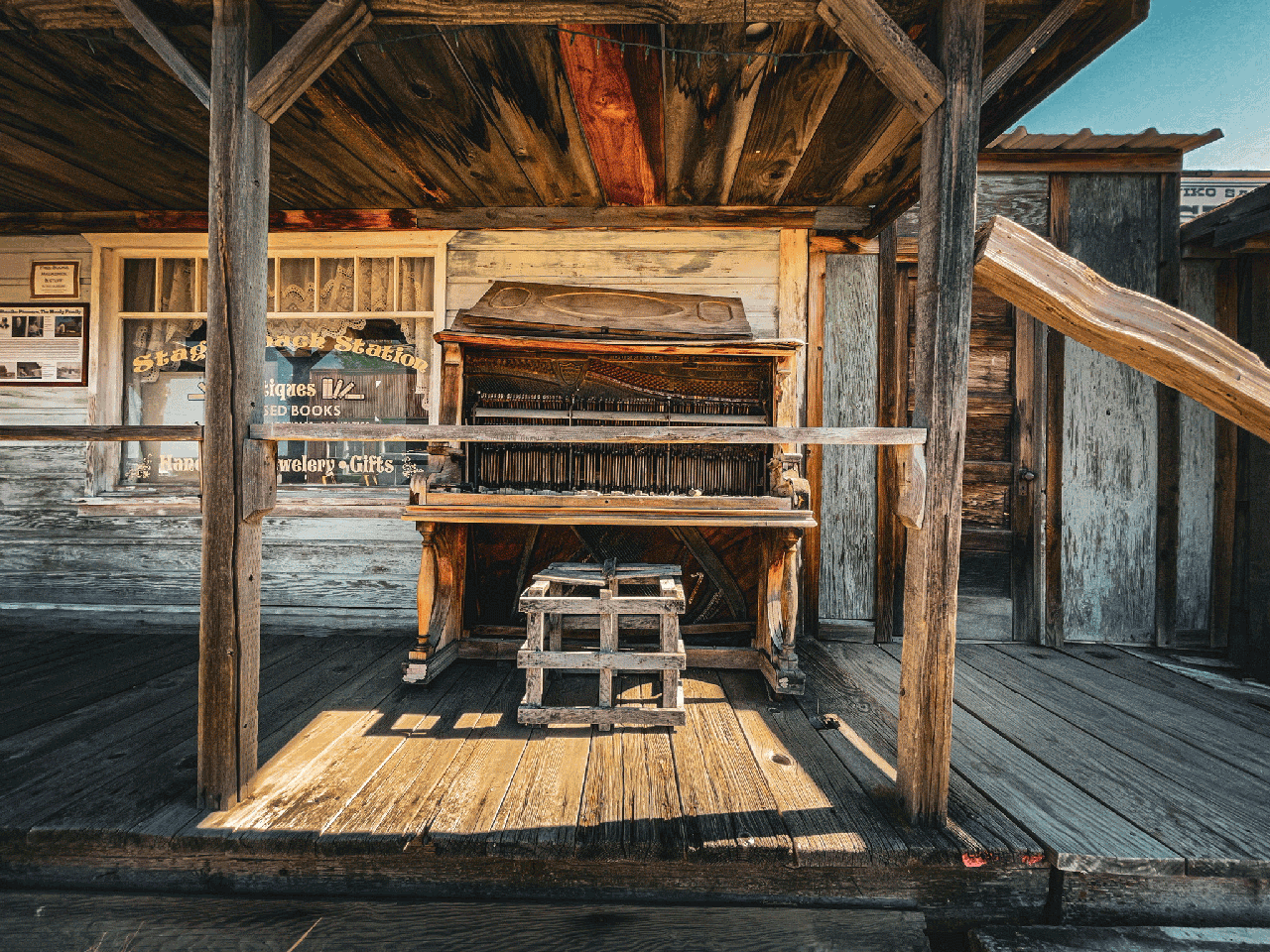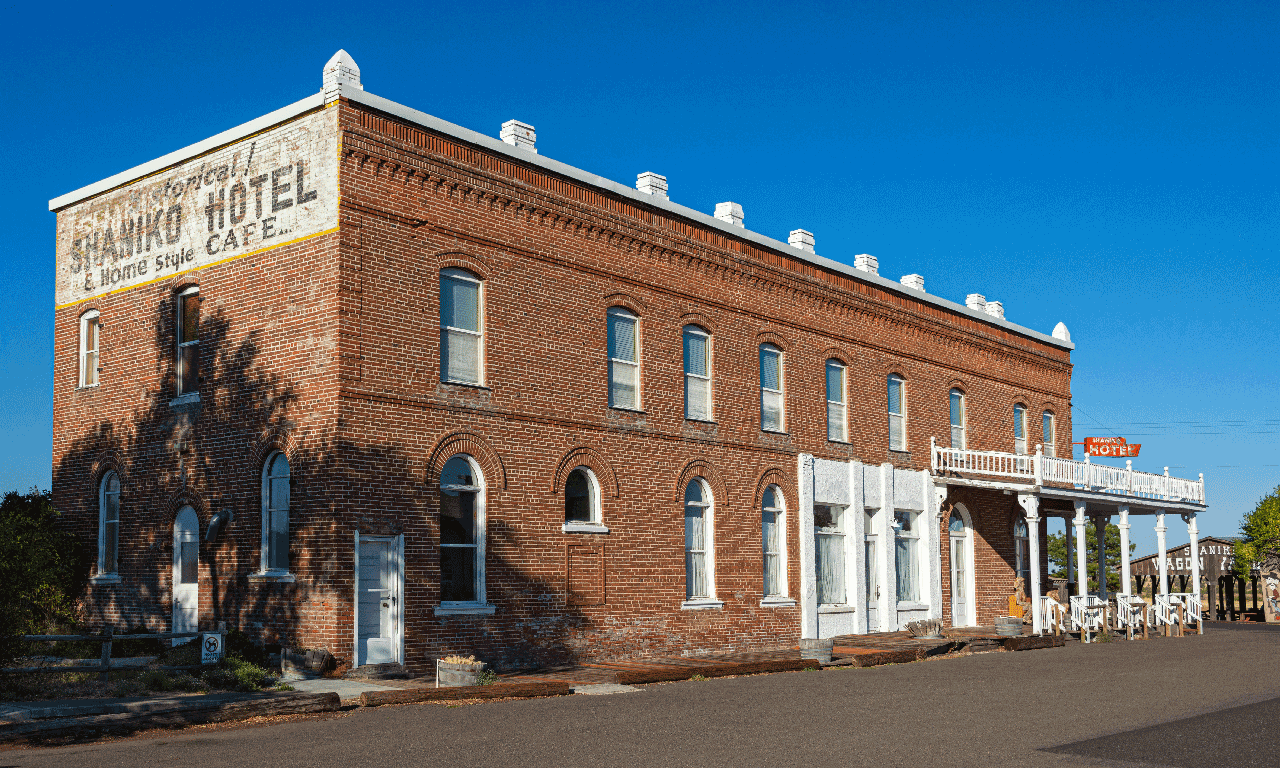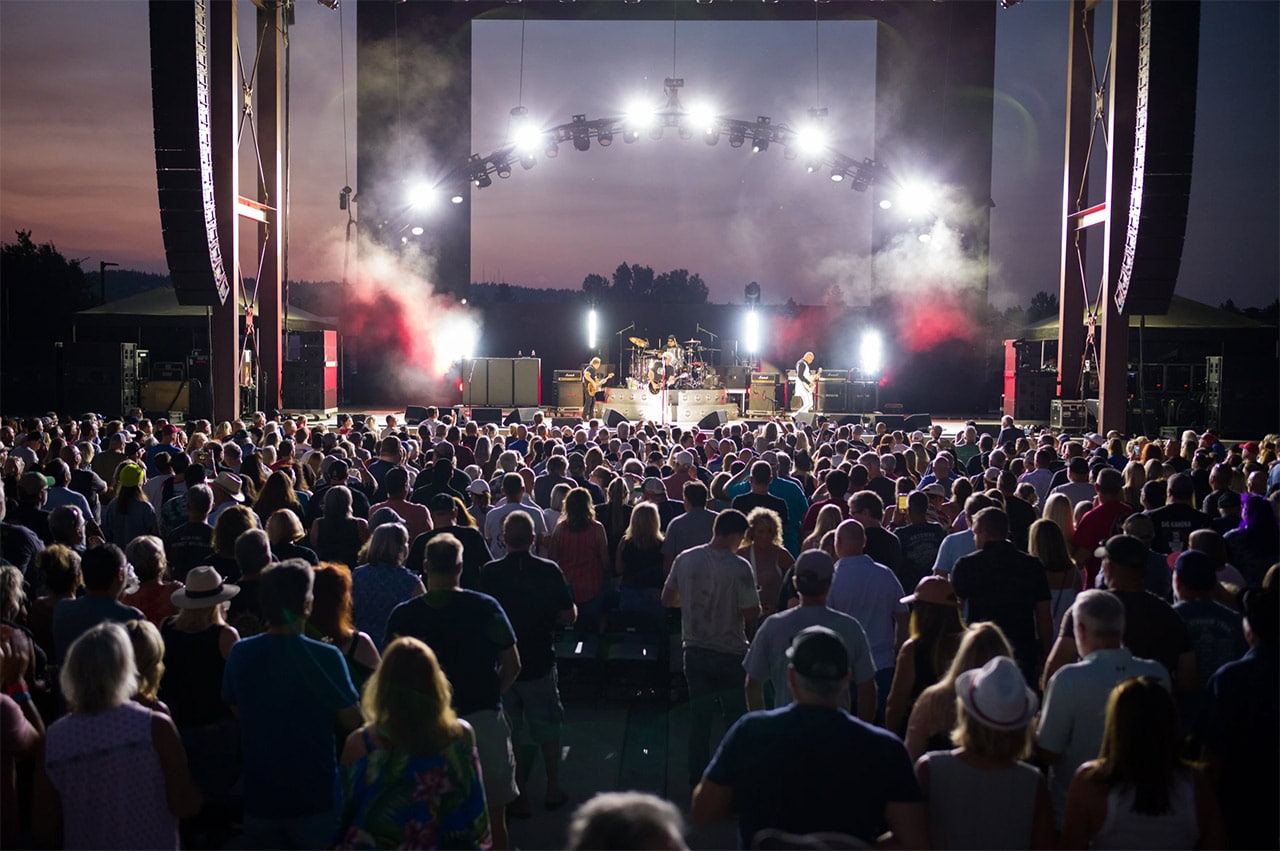Tracey Seslen and her two children slowly walk along the weathered boardwalk outside the Sage Saloon. They study a placard affixed to the building that explains part of this city’s colorful history, yet they can’t escape the sound of the Beastie Boys booming from speakers a block away.
This is the paradox of Shaniko, Oregon. The historically recognized ghost town is anything but silent. The thumping music blasts from its very own radio station—KDFM, 99.9. With a reach of just five miles in any direction from the center of town, it plays an eclectic mix of ‘90s hip hop to contemporary country music and ‘70s greatest hits, and the sound overflows through the streets. In October, a ragtime music festival will bring in two days of live music that harkens back more than 100 years to the town’s heyday. Shaniko is a ghost town alive with music, accompanied by the revival of a long-dormant hotel in its center.

From Wool Capital of the World to Official Ghost Town
Shaniko, 80 miles north of Bend on Highway 97, once had its claim to fame. It was considered the wool capital of the world from 1901 to 1911, when Oregon’s largest wool warehouse moved more than four million pounds a year on the Columbia Southern Railway. Business was so strong in 1901 that the railroad built and operated accommodations in what is now simply known as the Shaniko Hotel.
The demise of the railroad began in 1911 when a new line bypassed the town for Bend. Passenger service died in the early 1930s, and all operations ceased by 1966. Times were so stark that the Oregon Centennial Commission officially designated Shaniko a ghost town in 1959.
Capturing the story of Shaniko’s highs and lows falls to Debra Holbrook and the Shaniko Preservation Guild, keeper of the historical record. It dates back to 1879 and the first postmaster, August Scherneckau, whose phonetically-pronounced name became “Shaniko.” While there have been hard times, Holbrook said things are looking up. Today, she sits on a bench outside the hotel to recount the city’s story. She points to different buildings and riffs on each historical chronology. Many of the small, wood-framed units have been moved from land plot to land plot over the decades. Shaniko has survived three major fires, the collapse of its wool industry and the departure of the railroad.
But there are signs that Shaniko is less of a ghost town these days. A reliable flow of recreational vehicles detour from the highway for a slow, three-block drive on 4th and E streets, roads once part of old Highway 97 before the state realigned the roadway. Some travelers, such as the Seslen family, explore old buildings. Others stop at Seven Directions cafe for lunch or ice cream. “I’m used to seeing places that are reconstructed for tourists’ eyes.” Seslen said. “There’s much greater authenticity here.”
The Shaniko Hotel Welcomes Visitors Again
Across the street, the long-vacant Shaniko Hotel, built in 1902, has undergone renovations and now welcomes guests after sitting dormant for 15 years. South Wasco Fire & Rescue recently leased it from Portland-based R.B. Pamplin Corporation then made much-needed renovations and reopened the doors August 1. Net proceeds from the hotel go to the local fire department.
Travelers enter the front lobby of what was originally called the Columbia Southern Hotel and step up to the historic front desk. After checking in, they climb the original staircase to rooms decorated in an early 1900s motif. Once there were 44 rooms in this hotel; currently, 18 rooms have been renovated. There are no TVs but to meet guests’ expectations, there is Wi-Fi. Work on other spaces, including a dining room remodel, continues. Full completion is still years away.

Music Festival in the Desert
It may not be Coachella, but the 21st annual Shaniko Ragtime and Vintage Music Festival, October 6-8, honors the ragtime genre that challenged the musical norms of its time, much like the Beastie Boys did in the ‘80s. The festival tradition was born in 2001 when piano tuner Keith Taylor came to work on the old Columbia Southern Hotel piano, Holbrook said. Once the keyboard sounded the right notes, Taylor gave an impromptu ragtime music performance past midnight and the idea for a music festival was born. “That honky-tonk sound used to waft in the air from every place in town, in every saloon,” Holbrook said. Today, chords from a Beastie Boys song echo down the street. While Shaniko qualifies as a ghost town, because it’s still a shadow of its former self, today the musical notes sound like the fight for the right to revive.








